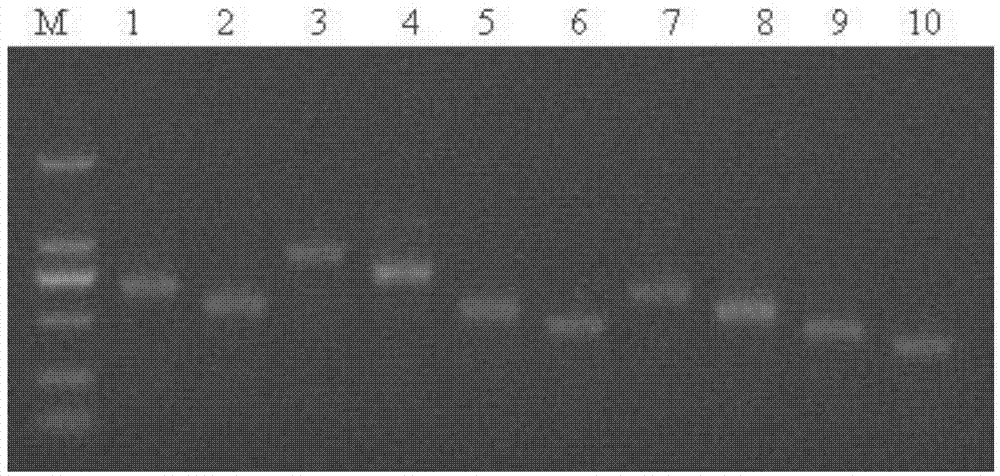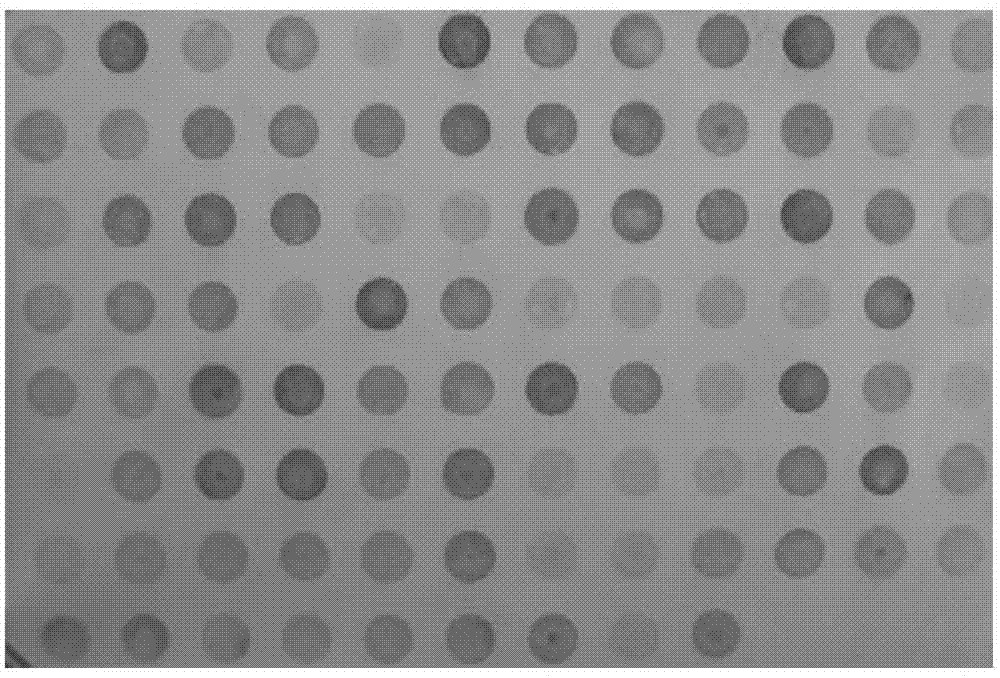Method for identifying iron deficiency-resistant apple rootstocks
A technology for iron-deficiency and apples, applied in the field of identification of iron-deficiency-resistant apple rootstocks, can solve problems such as complex genetic background, high gene heterozygosity, and difficulty in application, and achieve the effects of overcoming limitations, low cost, and high feasibility
- Summary
- Abstract
- Description
- Claims
- Application Information
AI Technical Summary
Problems solved by technology
Method used
Image
Examples
Embodiment 1
[0061] Embodiment 1, adopt Dot-blot-macroarray method to identify iron-deficiency-resistant apple stock
[0062] 1. Obtaining apple rootstocks to be tested and iron deficiency treatment
[0063] The 20-year-old Malus xiaojinensis Cheng et Jiang of the iron-efficient genotype was used as the female parent tree, and the iron-inefficient genotype Malus baccata Bokh. was used as the male parent tree. Sowed in 2010, received a total of 145 F 1 Group, 2012 cutting propagation, each line selects three cutting seedlings with the same growth, and transplants them in the river sand matrix cultivation tank. The iron ion concentration is 40μmol·L during normal iron supply -1 , the concentration of iron ions was 4 μmol L in iron deficiency treatment -1 . Specifically, the improved Hoagland’s nutrient solution was provided by drip irrigation to the river sand matrix that was completely rinsed with deionized water and tested to contain no iron ions, and the iron ion concentration was 40 ...
PUM
 Login to View More
Login to View More Abstract
Description
Claims
Application Information
 Login to View More
Login to View More - R&D
- Intellectual Property
- Life Sciences
- Materials
- Tech Scout
- Unparalleled Data Quality
- Higher Quality Content
- 60% Fewer Hallucinations
Browse by: Latest US Patents, China's latest patents, Technical Efficacy Thesaurus, Application Domain, Technology Topic, Popular Technical Reports.
© 2025 PatSnap. All rights reserved.Legal|Privacy policy|Modern Slavery Act Transparency Statement|Sitemap|About US| Contact US: help@patsnap.com



